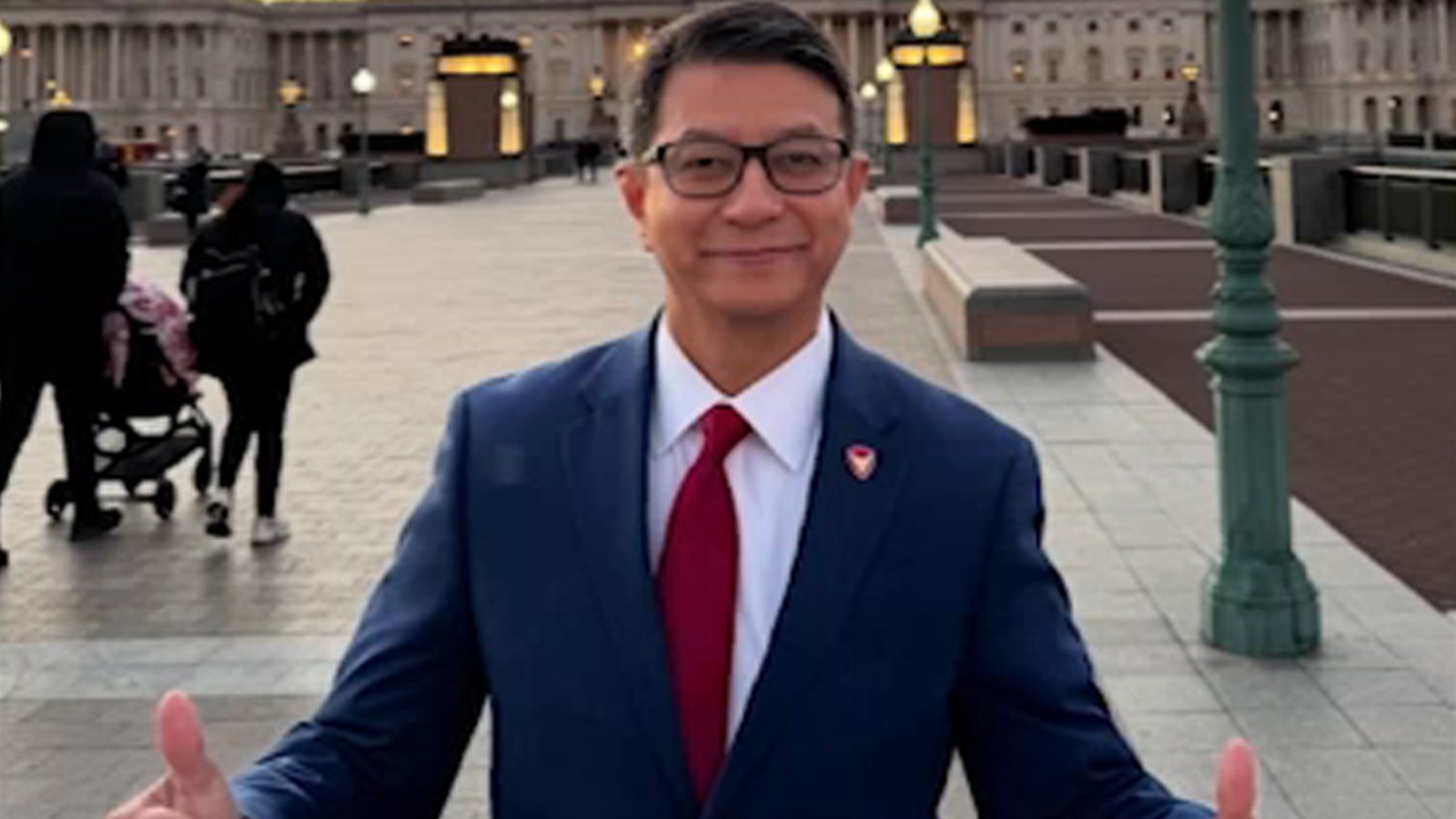Why this matters
For many immigrants, family is at the core of their desire to succeed and give back, and that often requires higher education. But there are barriers many Filipinos in San Diego face as they work towards completing a degree.
This story is a partnership between inewsource and Open Campus.
The savory aroma of lumpia — a mixture of ground meat with minced cabbage, carrots and onions hugged by a crepe-like wrap — seeped outside a modest condo in east Chula Vista. Different-sized sandals lie near the doormat. Inside, a vacuum buzzed, a mother slept before her morning shift and a father prepared a humble feast.
It had the usual marks of a Filipino home. Yet it’s a stark contrast from Enrico Del Mundo’s beginnings on his family farm in the Philippines.
Del Mundo immigrated to the U.S. more than two decades ago, eventually securing a county government job and building his credit to buy the condo in a now sought-after neighborhood that has since seen home values soar.
Here, he and his wife have raised three daughters and pushed them to pursue college.
“I don’t have wealth, that’s the only thing I can give them,” Del Mundo said.
The kids have heard the message. The two oldest are in college. And Erich, the youngest, has been building her resume since elementary school. The Eastlake High School senior racked up advanced placement classes, participated in visual and performing arts and joined a mentorship program, among other things.

Erich said she’s eager to earn a living sufficient enough to pay back her parents for their efforts.
“I owe my entire life to them,” she said.
That’s common among children of immigrants: Family is at the core of their desire to succeed and give back fueling pursuits of high-paying, college-required jobs like a doctor, nurse, engineer or lawyer.
But that’s not how it shakes out for most people in San Diego County, home to the second largest Filipino community in California.
Fewer than half of Filipinos have a bachelor’s degree or higher, and their median wage lags behind that of white residents by more than $15,000, according to a 2024 report by the San Diego Foundation.
This runs contrary to the model minority stereotype – that some ethnic groups, particularly Asian Americans, have higher levels of education and socioeconomic success than other minority groups.
“People believe that all of us are successful and are earning a lot of money… (but) the struggle is real,” said Jonathan Burgos, founder of First Gen Scholar. The San Diego nonprofit helps low-income students become the first in their families to get to college.
Burgos, who is Filipino, said parents, particularly those who grew up without much, want their kids to have economic security because it’s how they deem success. So they tell them about the high-paying jobs they’ve heard of and those kids tend to feel like it’s on them to take their family out of economic instability, he said.
Historically, state data shows that most Filipino students in the county graduate high school. And more than two-thirds of them enroll in college. But in the last six years, only about 41% of Filipino students have obtained a college degree. That’s comparable to rates for all students countywide, according to the most recent data provided by the local Office of Education.
Burgos said he’s worked with teens, including those who are Filipino, who face numerous barriers before they can even think about college, from low-income status to lack of transportation.
And the obstacles don’t stop there.
From high school to college
For Kylah Renehan, graduating college is an expectation in her family — but figuring out how to make that happen is up to her.
During her freshman year at San Diego State last August, Renehan, a marketing major, said she felt like an imposter as she struggled to fit in at the campus while taking on as many as 19 units and earning straight As like she always had.
“I kind of wanted to drop out of school,” she said.
Most Filipino students at San Diego State continue attending after their first year, but only a little over half actually graduate within four years, a summary of publicly available data shows.
Learning in college is different from high school, Burgos said. He learned it the hard way as a first-generation student at UC San Diego. He went from earning straight As in high school to being placed on academic probation during his first year of college because he didn’t know how to study or manage his time.
“It was very humbling to go from what I thought I knew about myself to not believing that I even belonged,” Burgos said.
Another hurdle: gaining experience
Even with a degree, a job after college is not necessarily a guarantee. Gaining experience and looking for a job early on is just as important to avoid settling for the first offer or feeling forced to take a job outside of your field, Burgos said.
Renehan, now a sophomore, is learning this. But taking on unpaid work in order to obtain the experience needed for the next step in her career is a stressful thought as someone who has to earn money in order to afford college, she said.
“It’s just having to do those extra steps and having to do much more than some other people have to go through,” Renehan said.
At San Diego State, roughly 40% of students were considered low income last year, according to the college. That year, more than a third of all its students used a Pell Grant to afford school and about a quarter pulled out federal student loans.
Affording college could get even harder for low-income individuals following a new bill that limits federal resources for students and changes the way some pay for college. The bill could impact the portrait of colleges across the country, experts say.
A possible dream
While not all Filipinos who enroll in college make it to that finish line, it’s important for the trailblazers who do to help the next generation, Burgos said. Finding individuals who look like you, understand where you’re coming from and are where you want to be can make a difference for some students, he added.
It’s what’s made the difference for Renehan.
This school year she’s found her footing, partly thanks to finding community in a Filipino student organization on campus known as Andres Bonifacio (AB) Samahan. The group pairs newer students with returning students who act as resources.
“Finding other Filipinos who are going through the same process I was going through, that made it easier,” Renehan said.
While Renehan settles into another year at San Diego State, Erich is preparing to follow similar footsteps and embark on the journey to earn a degree.
Although Erich is unsure what type of college she’ll go to — whether a four-year or community college — she wants to stay close to home. She’s also considering becoming a lawyer so she can eventually be in a position to financially care for her parents.
“Everything that I am now and what I have, it’s because of them … I know it’ll help my parents,” she said.
About the data from the local Office of Education
inewsource obtained college graduation data from the San Diego County Office of Education, which uses information gathered by the National Student Clearinghouse. In California, Filipinos are distinguished as a separate race/ethnicity group, but the federal government classifies these individuals as Asian, said Shannon Coulter, the director of research and evaluation for the county’s Office of Education. Some school systems may use the federal definition and not the state definition when submitting data to the National Student Clearinghouse, Coulter added.
Type of Content
News: Based on facts, either observed and verified directly by the reporter, or reported and verified from knowledgeable sources.











